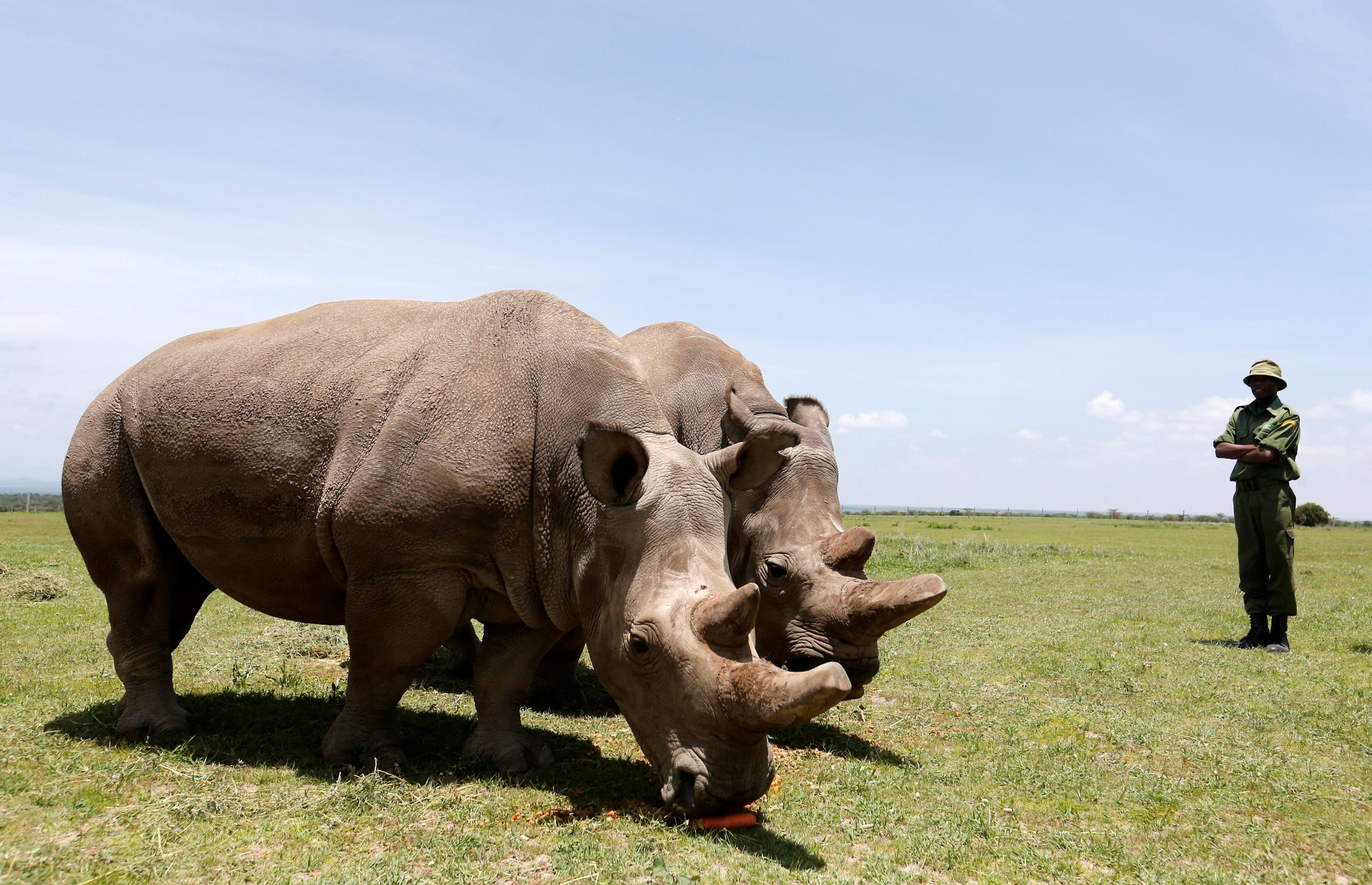El rinoceronte blanco del norte es uno de los animales más críticamente amenazados del planeta. Actualmente, solo quedan dos de estos majestuosos seres vivos, ambas hembras que viven bajo una estricta protección. Esta realidad alarmante ha generado un esfuerzo global urgente para salvar a la especie de desaparecer para siempre. La lucha no solo se trata de conservar un animal, sino de garantizar la biodiversidad y prevenir una pérdida trágica en el patrimonio natural de la Tierra.
This crisis has inspired the creation of a powerful documentary that captures the last chapter of the northern white rhino’s story. The film documents the efforts of scientists, conservationists, and animal caretakers who have dedicated their lives to preventing extinction. It is an emotional journey filled with hope, science, and determination. While the challenge is immense, the mission to revive the species continues through innovative reproductive technologies and relentless human commitment.
The disappearance of the northern white rhino has been caused by many years of illegal hunting and loss of habitat. Their horns, greatly prized in unlawful markets, resulted in extensive slaughter across Africa in the latter part of the 20th century. Even though global trade prohibitions were enacted, the harm was irreversible. By the time significant preservation attempts started, only a few animals remained, forcing researchers to urgently seek remedies.
Today, the two surviving rhinos live in a conservancy in Kenya, under round-the-clock armed protection. Their names, Najin and Fatu, have become symbols of resilience and vulnerability. Both are females and cannot carry pregnancies, which means natural breeding is no longer an option. However, researchers are using advanced techniques such as in vitro fertilization and surrogate mothers to keep the species alive. This approach represents one of the most ambitious conservation projects ever attempted.
The movie highlights the personal aspect of the mission. Audience members observe the relationship between the rhinos and their guardians, who have built significant emotional ties through years of collaboration. The commitment is remarkable; numerous guardians have foregone other chances to stay with the rhinos, recognizing the historical significance of their efforts. Each day with these creatures serves as a reminder of what is at risk and what could be lost globally if the initiative does not succeed.
Scientists leading the project come from different parts of the globe, uniting their expertise for a single purpose. Laboratories in Europe and Africa have been working on collecting and preserving genetic material from the last northern white rhinos. This includes harvesting eggs from the living females and using sperm stored from deceased males. The embryos created are kept frozen, awaiting a suitable surrogate mother from a closely related species—the southern white rhino.
Although the progress in technology is remarkable, there is no assurance of success. The undertaking demands significant financial and time resources and is not without challenges. Each embryo transfer necessitates meticulous accuracy, and not all efforts will result in a successful pregnancy. Nonetheless, dedication is steadfast. For those dedicated to conservation, the mere possibility of preserving a species justifies all the exertion. This initiative symbolizes optimism in a world where species are disappearing at an alarming rate.
The movie goes beyond narrating a scientific tale; it emphasizes the human duty to safeguard endangered species. It encourages audiences to consider how human behavior has resulted in this situation and what actions can be taken to avert similar problems in the future. Climate change, destruction of habitats, and illegal hunting persist in jeopardizing numerous species, turning the northern white rhino into a representation of a significantly larger struggle.
Education is essential in this struggle. By conveying the narrative via film, conservationists aim to motivate future generations to become involved. Safeguarding biodiversity necessitates international collaboration, effective policies, and monetary backing. If the northern white rhino is rescued, it will demonstrate that science and empathy can unite to rectify historical errors. It will additionally convey a compelling message that extinction is not a given when people decide to act.
The documentary is not just a chronicle of despair; it is a testament to resilience and innovation. Every scene captures the tension between loss and hope, illustrating that even at the brink of extinction, life finds a way through human determination. The survival of the northern white rhino may depend on technology, but it also relies on the world’s willingness to value and protect nature.
As the story unfolds, one thing becomes clear: the fight to save the northern white rhino is about more than one species. It is about preserving the balance of ecosystems, honoring the beauty of wildlife, and acknowledging our role as stewards of the planet. This effort challenges us to redefine what is possible in conservation and reminds us that the time to act for other endangered species is now.
If this initiative succeeds, it could act as a model for the preservation of other animals nearing extinction. The insights gained from this endeavor may assist in safeguarding species such as elephants, tigers, and numerous others at risk due to human interference. The film clearly shows that extinction is not merely a scientific issue but also a moral dilemma, requiring a united effort from the community.
The path of the northern white rhino has not yet reached its end. Despite the formidable challenges, the resolve of the individuals working towards its preservation provides a glimmer of optimism. Regardless of the species’ fate, the actions taken to protect it will have a profound effect on conservation science and worldwide consciousness. This narrative serves as a testament to humanity’s ability not only to devastate but also to mend and rejuvenate.

